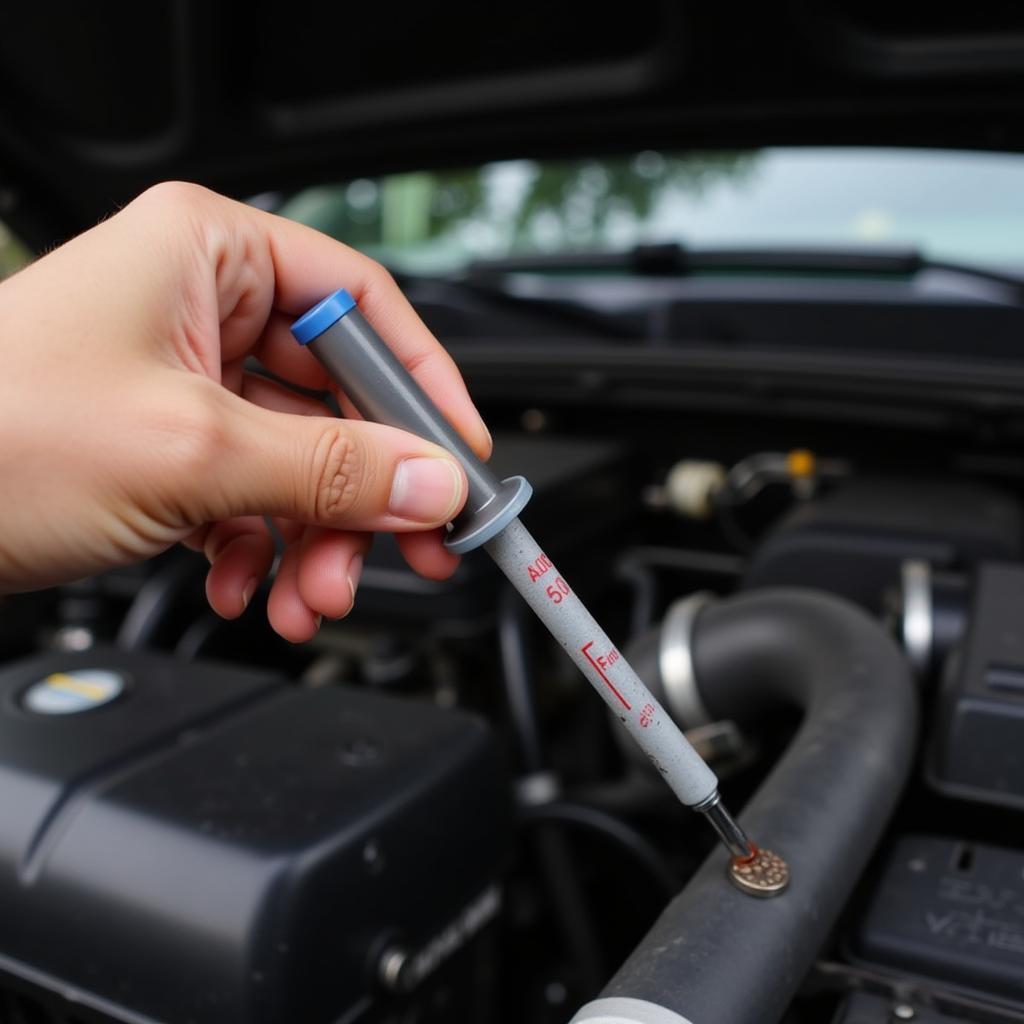A leaky car windshield is more than just an annoyance; it can lead to serious problems like mold, rust, and electrical damage. This guide provides a detailed approach to fixing leaky car windshields, offering solutions for both DIY enthusiasts and those who prefer professional assistance. Learn how to identify the source of the leak, choose the right sealant, and prevent future leaks.
Identifying the Source of the Leak
Locating the source of your windshield leak is crucial for an effective fix. Leaks can originate from various places:
- The Windshield Seal: The rubber gasket surrounding the windshield is the most common culprit. Over time, this seal can dry out, crack, or become dislodged, allowing water to seep through.
- Windshield Cracks or Chips: Even small cracks or chips can provide an entry point for water, especially during heavy rain or car washes.
- Rust around the Windshield Frame: Rust can weaken the metal around the windshield and compromise the seal, creating leaks.
- Clogged Drain Holes: Water can accumulate and overflow into the car’s interior if the drain holes at the base of the windshield are blocked by debris.
If you are experiencing wet floors in your car, it might not be your windshield. You might want to learn more about how to find and fix a water leak in car.
DIY Fixes for Leaky Car Windshields
Some windshield leaks can be fixed with DIY solutions:
- Inspect the Seal: Carefully examine the windshield seal for any visible damage, cracks, or gaps. Use a probe to check for loose areas.
- Clean the Seal: Thoroughly clean the windshield seal with a mild detergent and water. Remove any dirt, debris, or old sealant. A clean surface allows new sealant to adhere properly.
- Apply Windshield Sealant: Using a high-quality windshield sealant, carefully apply a bead along the affected area of the seal. Follow the manufacturer’s instructions for drying time.
- Clear Drain Holes: Use a thin wire or compressed air to clear any obstructions from the windshield drain holes.
- Temporary Fix with Tape: For small cracks or chips, you can temporarily seal them with clear waterproof tape until a permanent repair can be made.
When to Call a Professional
While some leaks can be tackled with DIY methods, others require professional expertise:
- Extensive Rust Damage: Rust around the windshield frame often necessitates professional repair or replacement of the frame.
- Large Cracks or Chips: Significant damage to the windshield itself typically requires replacement.
- Persistent Leaks: If you’ve tried DIY fixes and the leak persists, it’s best to consult a professional.
“A professional can diagnose the issue accurately and provide a lasting solution,” says John Miller, an automotive glass specialist with over 20 years of experience. “They have the specialized tools and knowledge to handle complex repairs.”
Preventing Future Windshield Leaks
Regular maintenance can help prevent future windshield leaks:
- Inspect the Seal Regularly: Check the windshield seal every few months for signs of wear and tear.
- Clean the Seal: Keep the seal clean and free of debris.
- Address Cracks and Chips Promptly: Repair small cracks and chips before they become larger and allow water to enter.
- Keep Drain Holes Clear: Regularly clear the windshield drain holes to prevent water buildup.
How to Fix a Leaky Car Windshield Due to Washer Fluid?
If your car windshield washer is leaking, you might need to fix it before it causes more problems. Check our guide on how to fix car windshield washer for more detailed instructions.
Dealing with a car roof leak can be frustrating. Our guide on how to fix car roof leak provides comprehensive steps for addressing this issue.
Conclusion
Fixing a leaky car windshield is crucial to maintaining the integrity of your vehicle and preventing further damage. By understanding the potential causes, implementing the appropriate fixes, and practicing preventive maintenance, you can keep your car dry and protected from the elements. Don’t let a leaky windshield become a major headache. For personalized support or to schedule a service appointment, contact AutoTipPro at +1 (641) 206-8880 or visit our office at 500 N St Mary’s St, San Antonio, TX 78205, United States.
FAQs
- How can I tell if my windshield is leaking? Look for signs of water inside the car, such as wet carpets, fogging, or a musty smell.
- Can I drive with a leaky windshield? While you can technically drive with a small leak, it’s best to address it promptly to prevent further damage.
- How much does it cost to fix a leaky car windshield? The cost varies depending on the source and severity of the leak. DIY fixes can be relatively inexpensive, while professional repairs can range from a few hundred to over a thousand dollars.
- How long does it take to fix a leaky car windshield? DIY fixes can take a few hours, while professional repairs can be completed in a day or two.
- Is it covered by insurance? Windshield repairs or replacements are often covered by comprehensive auto insurance policies. Check with your insurer for details.
- What is the best sealant for a car windshield? Urethane-based sealants are generally recommended for car windshields due to their durability and flexibility.
- Can condensation inside the car be mistaken for a leak? Yes, condensation can sometimes mimic a leak. Check out our guide on how do you fix condensation inside a car toyota for more information.






Leave a Reply